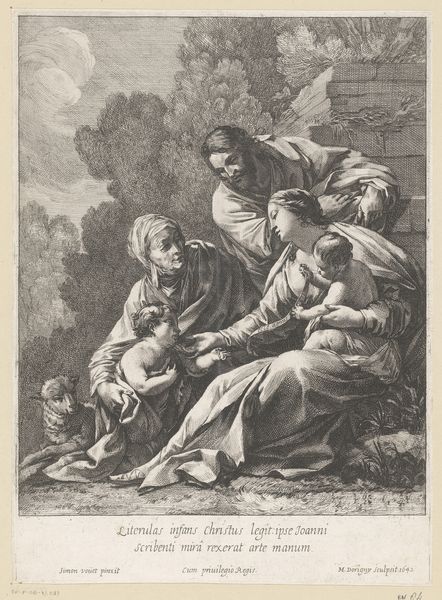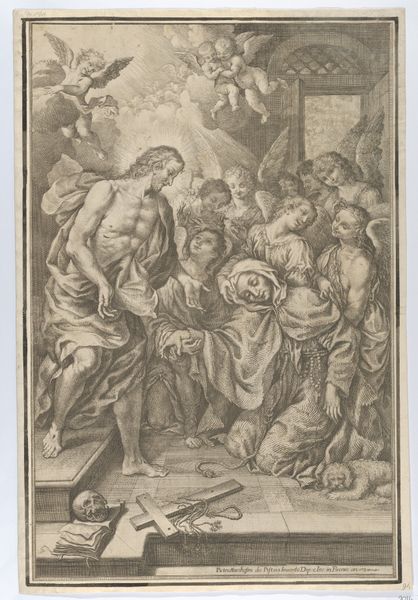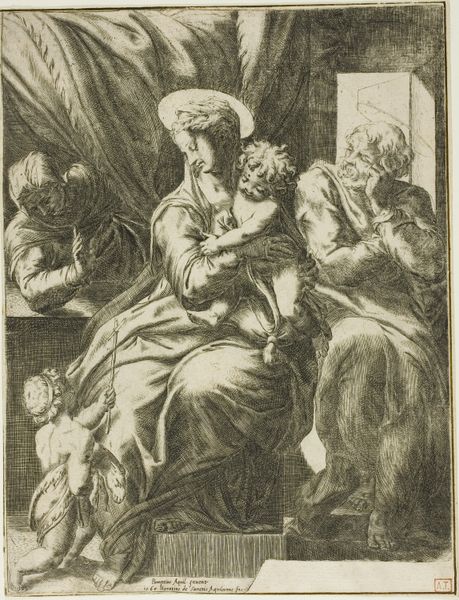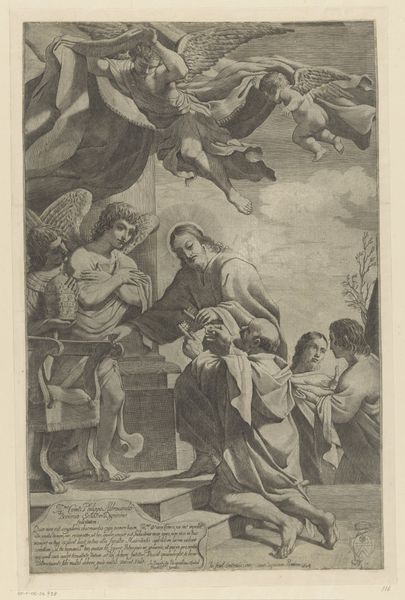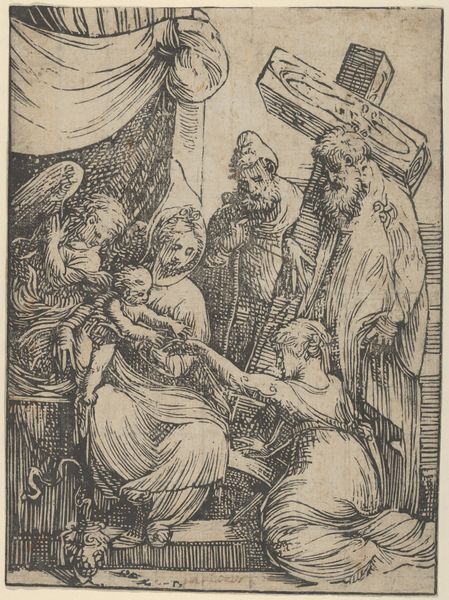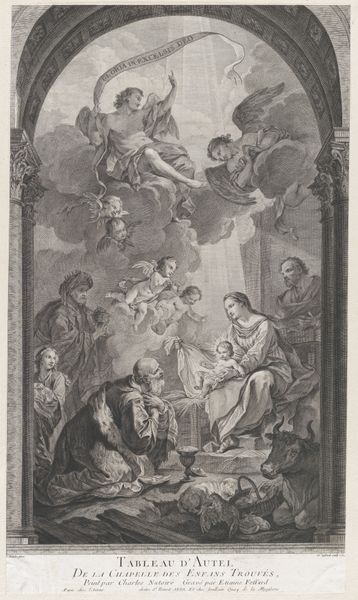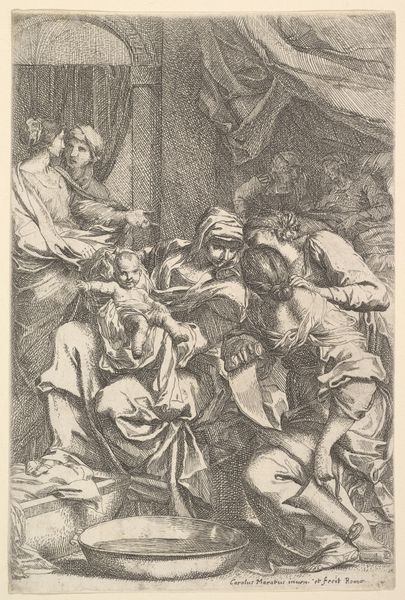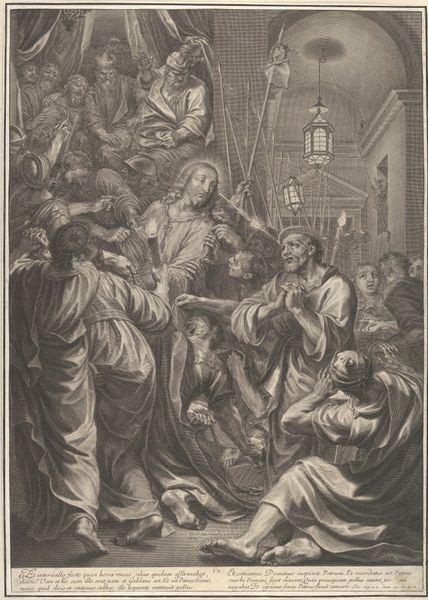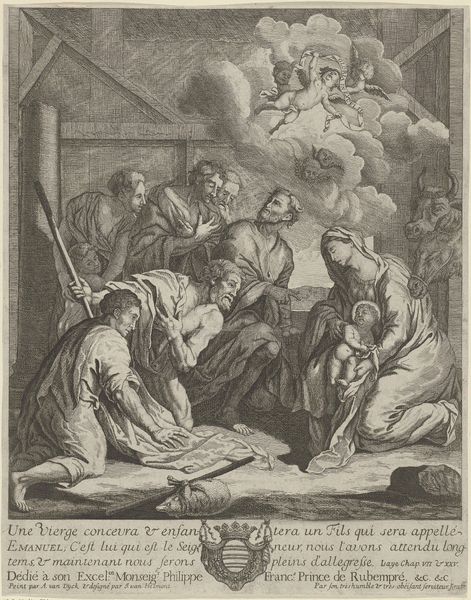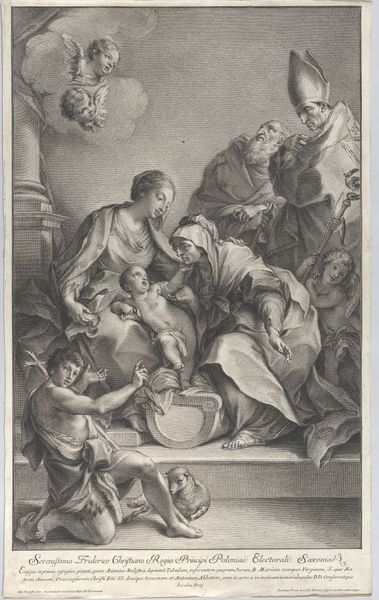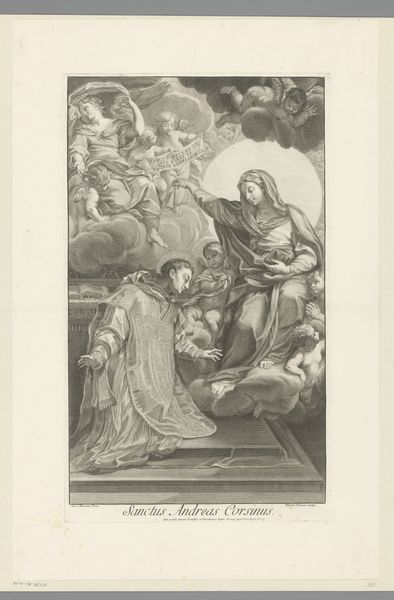
drawing, print, engraving
#
portrait
#
drawing
#
baroque
# print
#
figuration
#
child
#
line
#
history-painting
#
italian-renaissance
#
engraving
Dimensions: Sheet: 19 3/16 x 14 1/4 in. (48.7 x 36.2 cm) Plate: 8 3/8 x 5 11/16 in. (21.3 x 14.5 cm)
Copyright: Public Domain
Editor: Here we have Carlo Maratti's "The Adoration of the Magi," an engraving dating from 1640 to 1713. What immediately strikes me is the delicate quality of the line work, and the overall sense of movement and reverence captured in such detail. What do you see in this piece, Professor? Curator: The brilliance lies precisely in that interplay of line. Note how Maratti orchestrates depth and volume not through chiaroscuro as we might expect in Baroque art, but rather through a masterful control of linear density and direction. Consider the drapery: observe how the lines flow, contouring the figures and conveying weight. Ask yourself, how does this linework affect the overall composition? Editor: It does seem to direct the eye. The lines are much finer in the background, creating a sense of distance, while the foreground figures are rendered with greater intensity, really pulling them forward. Is that part of the Baroque style? Curator: Indeed. Baroque artists frequently exploited such strategies to heighten the immediacy and drama of their scenes, but here, Maratti achieves it with a more restrained elegance. Focus on the interplay between the architectural elements and the figures. How do these linear patterns affect your experience of the scene's space and depth? Editor: The strong vertical lines of the architecture definitely anchor the scene. Now that you mention it, it appears that even the shading is achieved solely through the varying density of the lines, which gives it an impressive range of tones and depth for a medium often considered two-dimensional. Curator: Precisely. And consider how Maratti avoids heavy cross-hatching, maintaining a lightness that serves the spiritual subject matter. What then, might this lightness suggest in terms of its intended reception and interpretation? Editor: I now see it is really all about the lines themselves. The way he manipulates them is astonishing. Curator: It reveals the beauty in structure and design, above the mere depiction of narrative. This focus on line and form certainly gives us a great deal to appreciate.
Comments
No comments
Be the first to comment and join the conversation on the ultimate creative platform.
